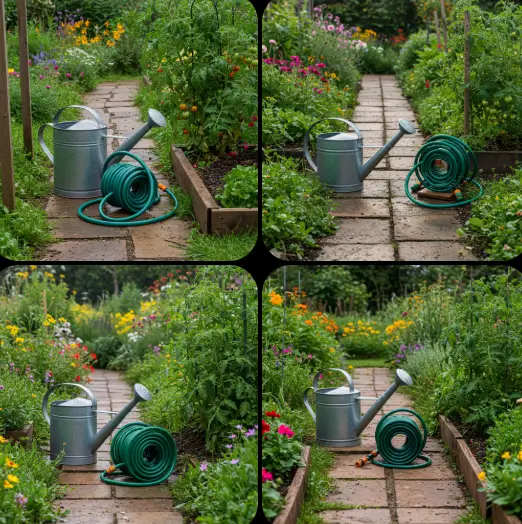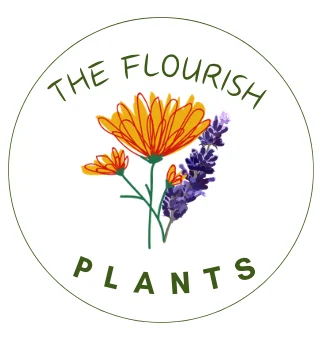My Aunt Rosa’s Garden Wisdom
I remember the first time I held a gardening trowel. It was in my Aunt Rosa’s backyard, just outside San Antonio. She was a fiercely proud Mexican woman with hands worn from decades of coaxing tomatoes, marigolds, and medicinal herbs from the soil. Her garden was a symphony of green, alive with scent, sound, and tradition. “Mijo,” she said, handing me the tool, “this is the only knife you need to grow life.” That trowel, faded and rust-speckled, became my initiation into the rich world of gardening.
Starting a garden can feel overwhelming—so many tools, techniques, and even more advice. I have spent years learning through trial, error, and the wisdom of gardeners like my aunt. Whether you are planting a backyard oasis, a small balcony pot, or a full-blown community plot, having the right tools is essential. But what are the garden tools must-haves for beginners? In this guide, I will walk you through each tool I believe every novice gardener should own, why it matters, and how to choose the right one for your needs.
Let us dig into the soil of knowledge and uncover the tools that will help you sow the seeds of success. This is not merely a shopping list—it is an invitation to connect with nature, nurture living things, and find peace in a patch of earth.

Table of Contents
Essential Hand Tools for Beginner Gardeners
The Indispensable Hand Trowel
I still keep that old trowel my aunt gave me, though I now use a newer model with a polished wooden grip and stainless steel blade. The hand trowel is arguably the most vital of the garden tools that beginners must have. It serves many purposes:
- Making small holes for planting seeds or young plants.
- Transplanting young plants
- Mixing soil with compost or fertilizer
- Removing weeds from tight spots
When choosing a trowel, consider these features:
- A sturdy, rust-resistant blade (preferably stainless steel)
- An ergonomically designed handle that rests comfortably in your hand.
- A slightly curved blade to scoop and carry soil easily
Cheap plastic trowels may seem sufficient at first, but I strongly advise investing in a quality one. You will save your hands—and your time.
Pruning Shears: Keeping Plants Healthy
As your garden grows, you will need to prune dead leaves, snip stems, and shape shrubs. This is where pruning shears, also called secateurs, become essential. My first pair came from the hardware aisle at a grocery store; I upgraded when I realized how critical sharpness and comfort were.
Good pruning shears should:
- Slice cleanly without crushing the stem
- Be easy to grip for long periods
- Open wide enough for thicker branches but still allow precision
There are two main types:
- Bypass shears, which use a scissor-like motion and are great for live plants
- Anvil shears, which have one blade pressing against a flat surface, are ideal for dead wood
I recommend bypass shears for beginners because they are versatile and gentle on living plants.
The Versatile Hori Hori Knife
Hori Hori, meaning “dig dig” in Japanese, is a tool I discovered late—but wish I had earlier. It combines the functions of a trowel, a knife, and a small saw. My neighbor, who grows herbs in raised beds, swears by hers.
A good Hori Hori knife should feature:
- A serrated edge for cutting through roots
- Depth markings for precise planting
- A comfortable, non-slip handle
This tool excels in tight spaces and dense soil. It is ideal for weeding, planting, and even harvesting root vegetables.
Digging Tools Every Gardener Needs
Spades and Shovels: Understanding the Differences
I used to think spades and shovels were interchangeable—until I tried edging a flower bed with a shovel and mangled the line completely. Spades have a flat, rectangular blade perfect for slicing into sod and shaping borders, while shovels feature a curved blade ideal for scooping and moving loose soil.
If you plan to do any amount of soil work, both tools have their place in your shed:
- Use a spade for digging holes, edging beds, and creating clean trench lines.
- Use a shovel for moving compost, soil, or mulch.
Key features to look for include:
- Strong steel blades with minimal flex
- Wooden or fiberglass handles that offer durability and shock absorption
- Comfortable grips to prevent blisters on long digging sessions
Trust me, a good spade is like a gardener’s sword. Invest wisely, and it will be your most trusted digging companion.
The Role of Garden Forks
My first experience using a garden fork was when Aunt Rosa had me turn her compost pile. I thought it was just a pitchfork from a Halloween costume—until I learned how effective it is at aerating compact soil. Garden forks are fantastic for loosening dirt without disturbing the root systems.
You will find them especially helpful when:
- Mixing in compost or soil amendments
- Lifting root vegetables like carrots or potatoes
- Breaking up clumps in hard-packed soil
Here is what makes a quality garden fork:
- Forged steel tines that do not bend under pressure
- A D-shaped handle for easy grip and control
- A solid shaft made of wood or metal that can handle stress
They may look simple, but garden forks can significantly improve soil health and drainage.
Weeding Tools to Maintain a Pristine Garden
The Efficiency of a Hoe
Weeding is no one’s favorite part of gardening, but a good hoe makes it less grueling. When I started gardening, I thought a hoe was only for farmers. Then came my first spring weed explosion, and I realized its true value.
There are several types of hoes:
- Draw hoes, which are pulled through the soil to shape beds or create trenches
- Scuffle hoes, which are pushed back and forth to cut weeds just below the soil surface
For beginners, I recommend a scuffle hoe. It is intuitive to use and great for regular maintenance. Key features to look for:
- A sharp blade for effective cutting
- A long handle that matches your height to prevent back strain
- Durability, especially if you have clay or rocky soil
Specialized Weeding Tools
Sometimes, weeds grow where hoes cannot reach—tight spaces between pavers or among delicate seedlings. That is when specialized weeding tools become invaluable. I keep a small weed puller in my tool belt at all times.
These tools offer:
- Precision removal of weeds with deep taproots
- Minimal soil disturbance, preserving nearby plants
- Ergonomic designs that reduce hand fatigue
Look for tools with:
- Stainless steel claws or forks
- Comfortable grips
- Built-in levers for extra pulling power
With a good weeding setup, you spend less time fighting weeds and more time enjoying your garden.
Watering Equipment for Optimal Plant Growth
Selecting the Right Watering Can
One of the first mistakes I made was using an old household pitcher to water my plants. It worked—until it spilled all over my seedlings. A proper watering can is not just tradition; it is practicality in action.
When choosing a watering can, think about the following:
- Capacity: Too small and you will refill constantly; too large and it becomes unwieldy.
- Spout design: A long spout helps reach the base of plants and reduces splash.
- Material: Plastic is lightweight but may crack; metal is durable but heavier
For seedlings and indoor plants, use a narrow-spouted can for precision. For outdoor gardens, a large can with a removable rose head provides gentle, even watering.

The Convenience of Garden Hoses and Nozzles
As your garden expands, a watering can may not be enough. That is when a garden hose becomes indispensable. My first hose tangled so often that I nearly gave up. I later learned the value of quality materials and nozzle attachments.
What makes a good garden hose :
- Kink-resistant material
- Adequate length to reach all corners of your garden
- Weather resistance to withstand sun exposure
Nozzles matter, too. A good adjustable nozzle allows you to:
- Switch between gentle mist and powerful stream
- Control pressure for different plant types
- Conserve water by shutting off at the handle
Having reliable watering gear is crucial for healthy, vibrant growth.
Protective Gear and Accessories
Gloves: Your First Line of Defense
One of the best gifts I ever received was a pair of thick leather gardening gloves from my cousin. Until then, I had underestimated how much damage brambles, thorns, and even soil could do to my hands.
When selecting gloves:
- Choose durable materials like leather or reinforced fabric for thorny jobs
- Look for snug but breathable fits to reduce sweating
- Consider long cuffs for extra protection from branches and bugs
Having multiple pairs for different tasks—watering, pruning, weeding—can keep your hands safe and comfortable all season long.
Garden Aprons and Tool Belts
When you’re in the gardening zone, the last thing you want is to keep running to the shed. A well-designed apron or tool belt keeps essentials close and your clothes clean.
Look for:
- Multiple pockets for tools, seed packets, and gloves
- Water-resistant material that withstands dirt and moisture
- Adjustable straps for a custom fit
They may not seem essential, but they make gardening much more efficient.

FAQs: Garden Tools Must-Have for Beginners
Q: Can I start gardening without buying all these tools at once?
Absolutely. Start with the basics: a trowel, pruning shears, and a watering can. You can gradually expand your toolkit as your garden grows and your needs become clearer.
Q: Are expensive tools worth the investment?
In most cases, yes. High-quality tools tend to last longer, perform better, and are more comfortable. Think of them as an investment in your gardening journey.
Q: Where should I store my garden tools?
Please keep them in a dry, sheltered place like a shed, garage, or storage box. Regularly clean and oil them to prevent rust and prolong their life.
Q: Are there any eco-friendly tool options?
Yes. Many brands now offer tools made with recycled materials, sustainably harvested wood, and eco-conscious manufacturing processes.
Growing with the Right Tools
My journey from Aunt Rosa’s backyard to cultivating my garden has been one of discovery, patience, and deep joy. Having the right tools made all the difference—not just in the success of my plants but in how much I enjoyed the process.
Gardening is more than planting seeds. It’s about nurturing life, learning from nature, and cultivating peace. The tools outlined in this guide are not just steel and wood—they are extensions of your hands, your care, and your heart.
So whether you’re just starting with a few pots on a balcony or envisioning rows of thriving vegetables, remember this: the best tool in any garden is the gardener themselves. Equip yourself well, stay curious, and grow boldly. The best tips for gardening are : (click here )
Visit our page on Facebook to learn more
Happy gardening!
Disclaimer: This article is for informational and educational purposes only.
It does not constitute professional medical or health advice, diagnosis, or treatment. Always consult with a qualified professional before making any health-related decisions.
